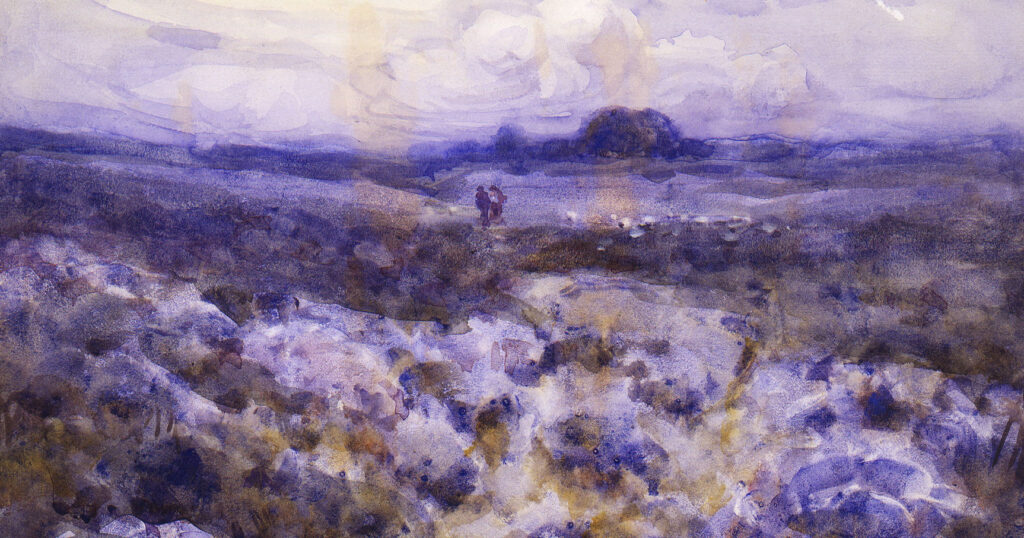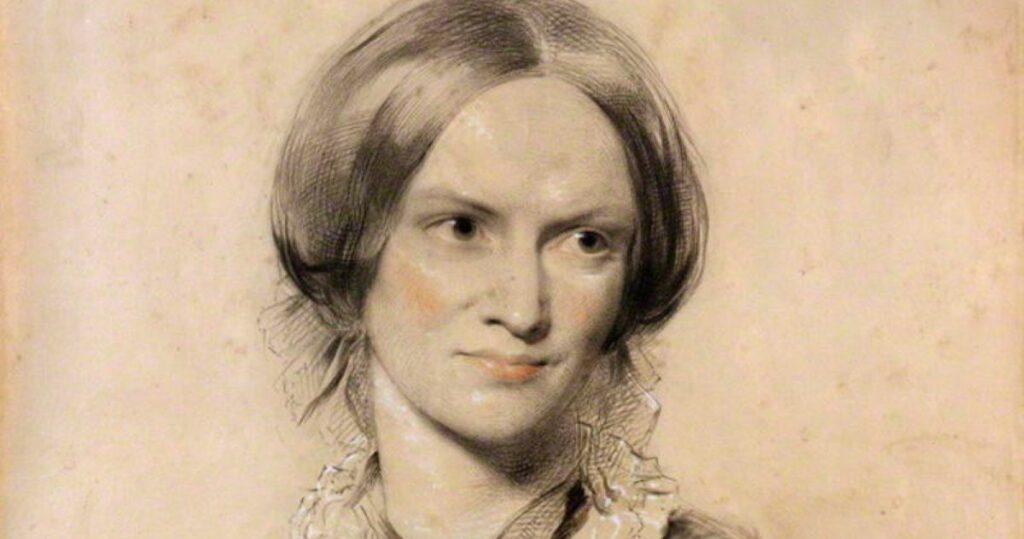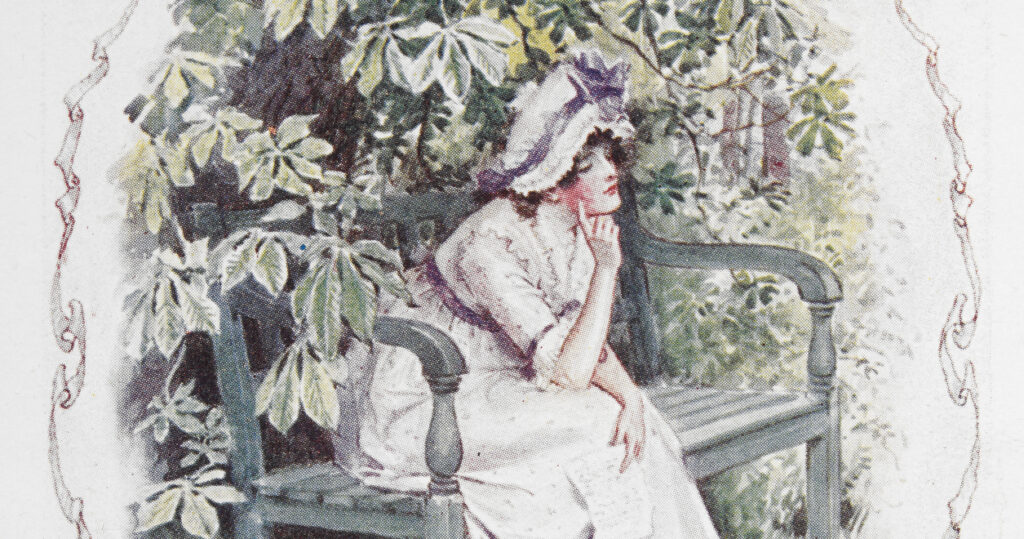A literary reflection by Molly Lackey on Emily Bronte's Wuthering Heights This is one installment of a monthly series providing reflections on works of literature from a Lutheran perspective.
The first time I read Wuthering Heights, I hated it. In fact, I hated it so much that I got into a (very friendly and very funny) argument with a friend’s teenage sister, who had also just read it for the first time and who loved it. “Molly, I’m starved for drama,” she’d said. “This book? So. Much. Drama.”
Wuthering Heights, Emily Brontë’s 19th-century novel, is a very divisive book, and this dynamic, I would later learn, is the norm. The book is grim and intense, and the reader is often confused about the direction of the plot and the point of the fairly unhappy ending. Nevertheless, it appears on many a Christian homeschool and great books reading list. When it was published, the Victorian periodical Graham’s Lady Magazine had the following to say: “How a human being could have attempted such a book as the present without committing suicide before he had finished a dozen chapters, is a mystery. It is a compound of vulgar depravity and unnatural horrors.”[1] Now, the book is now considered one of the high watermarks of English literature. So, what on earth is Wuthering Heights about, and why on earth should the Christian read it?
Much of the problem readers have with Wuthering Heights is a fundamental misunderstanding of the nature of the book. Wuthering Heights is frequently lumped in with the work of Jane Austen and Charlotte Brontë, Emily Brontë’s sister. When it fails to deliver on the promise of an Austenian comedy of manners or Jane Eyre’s legible redemption arc, readers feel frustrated. Some modern adaptations of the work add additional confusion: Wuthering Heights is cast as a dark romance, a prescient prediction of the prurient paperback. But herein lies the problem with both false impressions: Wuthering Heights is not a love story — far from it. In fact, it’s an anti-love story, a parable about how counterfeit love destroys not only oneself but the innocent bystanders who happen to get in the way.
“Be with me always—take any form—drive me mad!”
Hindley and Catherine Earnshaw are shocked when their father brings a child back from a business trip to Liverpool, whom he claims he found abandoned on the street. The child, whom he calls merely “Heathcliff,” is to be raised as their brother. The children’s parents die, leaving oldest brother Hindley in charge of the house. He uses his newfound authority to ostracize Heathcliff, reducing him to the status of a servant, denying him education and so condemning him, it would seem, to illiteracy and social irrelevance. Nevertheless, Catherine sticks by Heathcliff, teaching him and frequently running off onto the moors with him to play, a headstrong, distempered, ill-behaved pair.
The relationship between Catherine and Heathcliff is strange: Despite being adoptive stepsiblings (or, as some scholars claim, half-siblings) the relationship becomes fraught with unactualized romantic tension. Then, when Catherine begins spending time with the more civilized Linton children who live nearby, she adopts a dual personality: At home with Heathcliff, she is wild and cruel, mocking the soft Linton family, especially their son, Edgar; with the Lintons, she is civil and mannered, bemoaning the wickedness of Heathcliff. This situation is untenable.
Then comes the shock: Edgar Linton visits Catherine, who is now 15, beautiful, proud and still deeply wicked, to proposes to her. She accepts, because “he will be rich, and I shall like to be the greatest woman of the neighborhood, and I shall be proud of having such a husband.” But her feelings lie elsewhere:
“[Heathcliff] shall never know how I love him: … he’s more myself than I am. Whatever our souls are made of, his and mine are the same; and Linton’s is as different as a moonbeam from lightning, or frost from fire.”
When Heathcliff returns, Catherine Earnshaw is now Mrs. Linton, but this does not stop him from paying strange, aggressive visits to the newlywed couple. Then, when Mrs. Linton’s sister-in-law, the young Isabella, confesses to having feelings for Heathcliff, the wicked man takes the opportunity to revenge himself upon Catherine by eloping with the young woman, who immediately regrets the union when Heathcliff’s true, devilish nature is revealed.
Shortly thereafter, Catherine realizes she is pregnant, while also extremely ill due to the emotional turmoil Heathcliff has caused. She gives birth prematurely to a daughter and then dies. Heathcliff’s response to Catherine’s death is far from Christian grief:
“May she wake in torment … Where is she? Not there—not in heaven—not perished—where? … Catherine Earnshaw, may you not rest as long as I am living; you said I killed you—haunt me, then! The murdered do haunt their murderers, I believe. I know that ghosts have wandered on earth. Be with me always—take any form—drive me mad! only do not leave me in this abyss, where I cannot find you! Oh, God! it is unutterable! I cannot live without my life! I cannot live without my soul!”
Catherine dies at roughly the halfway point in the novel, and in the remaining pages, Heathcliff revenges himself, scheming to hurt and steal the property from all of the inhabitants of the moor, including the next generation of Earnshaws and Lintons. It takes a full generation — nearly twenty years — to begin to undo all of the harm wrought on the community by Heathcliff and Catherine.
While there is no textual evidence that Heathcliff and Catherine ever have a physical relationship, the book is nevertheless about the root of sexual sin. Heathcliff and Catherine perfectly illustrate the devastating effects of original sin upon mankind, which, as Luther described it, curves man’s heart in upon himself, leading to sinful works and actions. All sexual sin comes from disordered, self-serving pseudo-love. The strong emotions and passions of the two characters should not be mistaken for actual love, and the characters in the novel who are actually Christian — like the narrator for most of the book, the servant Nelly Dean — understand this fact.
The apostle Paul and Christ Himself tell us that love is found in self-giving. This is seen most clearly when Christ lays down His life for all mankind on the cross, and it is seen in the model of love and submission between husband and wife in marriage, itself a symbol pointing back to Christ and His church. This is not the relationship between Catherine and Heathcliff. Their pseudo-love is an obsession absolutely turned inward, a snake eating itself which, in its appetite, finds destruction. The reader is supposed to, like the narrators and ancillary characters in the novel, find Catherine and Heathcliff to be absolutely abhorrent, and join in crying out to God for deliverance and respite. It does come, at the very end of the novel; you’ll just have to read it to find out how.
What does great literature do?
To return to my feud with my teenage compatriot: Upon re-reading Wuthering Heights, I think she was right. The point of Wuthering Heights is all the drama. Playwright Oscar Wilde explained the purpose of novels this way: “The good ended happily, and the bad unhappily. That is what Fiction means.” The reverse is often true in real life, when sin goes unpunished and hurt unhealed. The drama of sin — especially sexual sin — is chaotic and unnerving. We are sinned against and often never experience reconciliation. But great literature seeks to portray messy human life in light of the ideal, namely, bringing order to chaos and so illuminating that which is disturbing and heartbreaking through the long lens of God’s justice and love. In Wuthering Heights, we can hold the sin at arm’s length and analyze it in a way that we never could if we were the victims of comparable real-life harm. We can understand, even sympathize with, Catherine and Heathcliff, and acknowledge the power of emotion set forth in Brontë’s prose, while still recognizing their behavior to be reprehensible and corrosive. Finally, we can find comfort in the eventual dawning of domestic peace on the Heights and enjoy the ride to the conclusion in much the same way as we might enjoy a rollercoaster or a suspenseful film.
The drama of Wuthering Heights helps us see the mortal in light of the eternal, both by giving us a chance to consider why grandiose sin happens in the first place, and a reminder that, even if we die with grief in our hearts for sins done against us, in the final accounting of things, the good — those redeemed by Christ — do end happily: “He will wipe away every tear from their eyes, and death shall be no more, neither shall there be mourning, nor crying, nor pain anymore, for the former things have passed away” (Rev. 21:4).
[1] Quoted in Nick Collins, “How Wuthering Heights caused a critical stir when first published in 1847,” The Guardian, March 22 2011, online, accessed Oct. 10 2025.
Cover image: “Shingaly Moor, Yorkshire,” by Margaret Stoddart, 1865–1934.





